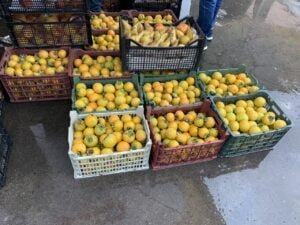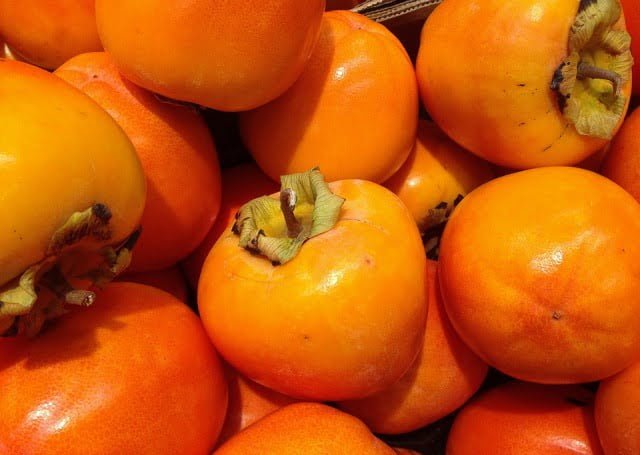The first persimmon of the “Hiakume” variety arrived on the Tbilisi wholesale market. Prices fluctuate between 1.50-2 GEL ($ 0.48-0.64). These are the first batches, the fruits are still small and producers are trying to sell fruits of this caliber as quickly as possible. Commercial growers plan to harvest the main volume of persimmons in October. Due to heavy rains and hail, a significant part of the persimmon harvest was damaged, and farmers in the Kakheti region, Kvareli municipality, lost hundreds of tons of crops. Therefore, persimmons will not be cheap this season.

Since 2017, Georgia has been increasing the production and export of persimmons by at least 10% per year. The share of exports of produced persimmons is also growing – from 37% in 2017 to 75% in 2020. Thus, in 2020, Georgia exported 2.5 times more persimmons (in tons) than on average over the past 6 years – 11.5 thousand tons.
Basically, persimmons were sold to Ukraine, but in the last 2 years, the share of exports to Ukraine decreased from 50% to 30%, and in 2020 more than 40% of the volume went to the Russian Federation. The average export price over the past three years has been fairly stable – $0.50 per 1 kg.
There are three main varieties in Georgia – Hachia (the so-called Japanese persimmon or Japanese), Fuyu and Hyakume (kinglet persimmon). Farmers are also experimenting with the Spanish Rojo Brilliante.
Read also: Poor harvest of persimmon in Spain – is it a chance for Uzbekistan, Tajikistan and Georgia?
It is Hachia that is in high demand in the Ukrainian and Russian markets. It is a seedless variety that is harvested firm but ripe when 2/3 of the fruit is bright orange and is being refined in the target market. Hachia is grown on 95% of all commercial plantations in Georgia.
Hyakume variety requires mandatory pollination in order to get kinglet, as it is called in Georgia. Persimmon blooms from mid-May to mid-June. If pollination has not occurred, then the fruit will be rich in tannin – the taste will be astringent. On the same tree, you can get both astringent fruit and kinglet, depending on the quality of pollination.
Growing the Fuyu variety is the most convenient, since you don’t have to worry about pollination and the variety, as it is non-astringent. Although it is not popular in the local market, as consumers determine the presence of tannins in the old way by the color of the fruit pulp – if the color is brown, it is kinglet and it is non-astringent. In fact, this variety has light pulp, which is mistakenly considered astringent. The fruit is also lighter than Hachia and is harvested a little earlier before it is ripe.
Rojo Brilliante is also an astringent variety.
The advantage of astringent varieties is that they are less sensitive to temperature and more transportable. For Hyakume and Fuyu, on the other hand, refrigeration is required.
The use of the site materials is free if there is a direct and open for search engines hyperlink to a specific publication of the East-Fruit.com website.




